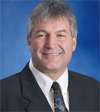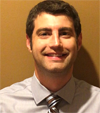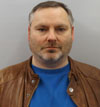Conclusion
The measured SFDR results when the LOs and NCOs are offset in frequency, clearly shows the spurious created are all at different frequencies and are not coherent in the combining process thus ensuring an SFDR improvement as channels are combined. LO and NCO frequency control is now a programmable feature in the latest Analog Devices transceiver products. The results demonstrate this feature can be exploited in phased array applications ensuring an array level SFDR improvement over the single channel performance.
References
- Howard and Rabideau, “Correlation of Nonlinear Distortion in Digital Phased Arrays: Measurement and Mitigation,” 2002 IEEE MTT-S Digest.
- Talisa et al, “Benefits of Digital Phased Arrays,” Proc. IEEE, Vol. 104, No. 3, March 2016.
- Lauritzen, “Correlation of Signals, Noise, and Harmonics in Parallel Analog to Digital Converter Arrays,” Ph.D Dissertation, JHU, 2009.
- Howard, Simon and Rabideau, “Mitigation of Correlated Non-Linearities in Digital Phased Arrays Using Channel-Dependent Phase Shifts,” 2003 IEEE MTT-S Digest.
- Rabinkin and Song, “Front-End Non-Linear Distortion and Array Beamforming,” Radio and Wireless Symposium (RWS) 2015 IEEE.
- Delos, “A Review of Wideband RF Receiver Architecture Options,” Analog Devices Technical Article, February 2017.
- Harris, “What’s up with Digital Downconverters” Part 1 and 2, Analog Dialogue, 2016
- Delos, “Can Phased Arrays Calibrate on Noise,” Microwave Journal, March 2018.
 Peter Delos is a technical lead in the Aerospace and Defense Group at Analog Devices in Greensboro, N.C. He received his BSEE from Virginia Tech in 1990 and MSEE from NJIT in 2004. Delos has over 25 years of industry experience. Most of his career has been spent designing advanced RF/analog systems at the architecture level, PWB level and IC level. He is currently focused on miniaturizing high performance receiver, waveform generator and synthesizer designs for phased array applications.
Peter Delos is a technical lead in the Aerospace and Defense Group at Analog Devices in Greensboro, N.C. He received his BSEE from Virginia Tech in 1990 and MSEE from NJIT in 2004. Delos has over 25 years of industry experience. Most of his career has been spent designing advanced RF/analog systems at the architecture level, PWB level and IC level. He is currently focused on miniaturizing high performance receiver, waveform generator and synthesizer designs for phased array applications.
 Mike Jones is a principal electrical design engineer with Analog Devices working in the Aerospace and Defense Business Unit in Greensboro, N.C. He joined Analog Devices in 2016. From 2007 until 2016 he worked at General Electric in Wilmington, N.C. as a microwave photonics design engineer working on microwave and optical solutions for the nuclear industry. He received his B.S.E.E. and B.S.C.P.E. from North Carolina State University in 2004 and his M.S.E.E. from North Carolina State University in 2006.
Mike Jones is a principal electrical design engineer with Analog Devices working in the Aerospace and Defense Business Unit in Greensboro, N.C. He joined Analog Devices in 2016. From 2007 until 2016 he worked at General Electric in Wilmington, N.C. as a microwave photonics design engineer working on microwave and optical solutions for the nuclear industry. He received his B.S.E.E. and B.S.C.P.E. from North Carolina State University in 2004 and his M.S.E.E. from North Carolina State University in 2006.
 Mark Robertson graduated from Cambridge University in 1990 with a degree in electrical and information sciences. He worked as an RF and analog circuit design engineer for various companies in the test and measurement, cellular phone and cellular base station industries before joining Analog Devices in in Bath, U.K. as a systems engineer in 2012. He still likes to design real circuits whenever he can.
Mark Robertson graduated from Cambridge University in 1990 with a degree in electrical and information sciences. He worked as an RF and analog circuit design engineer for various companies in the test and measurement, cellular phone and cellular base station industries before joining Analog Devices in in Bath, U.K. as a systems engineer in 2012. He still likes to design real circuits whenever he can.
